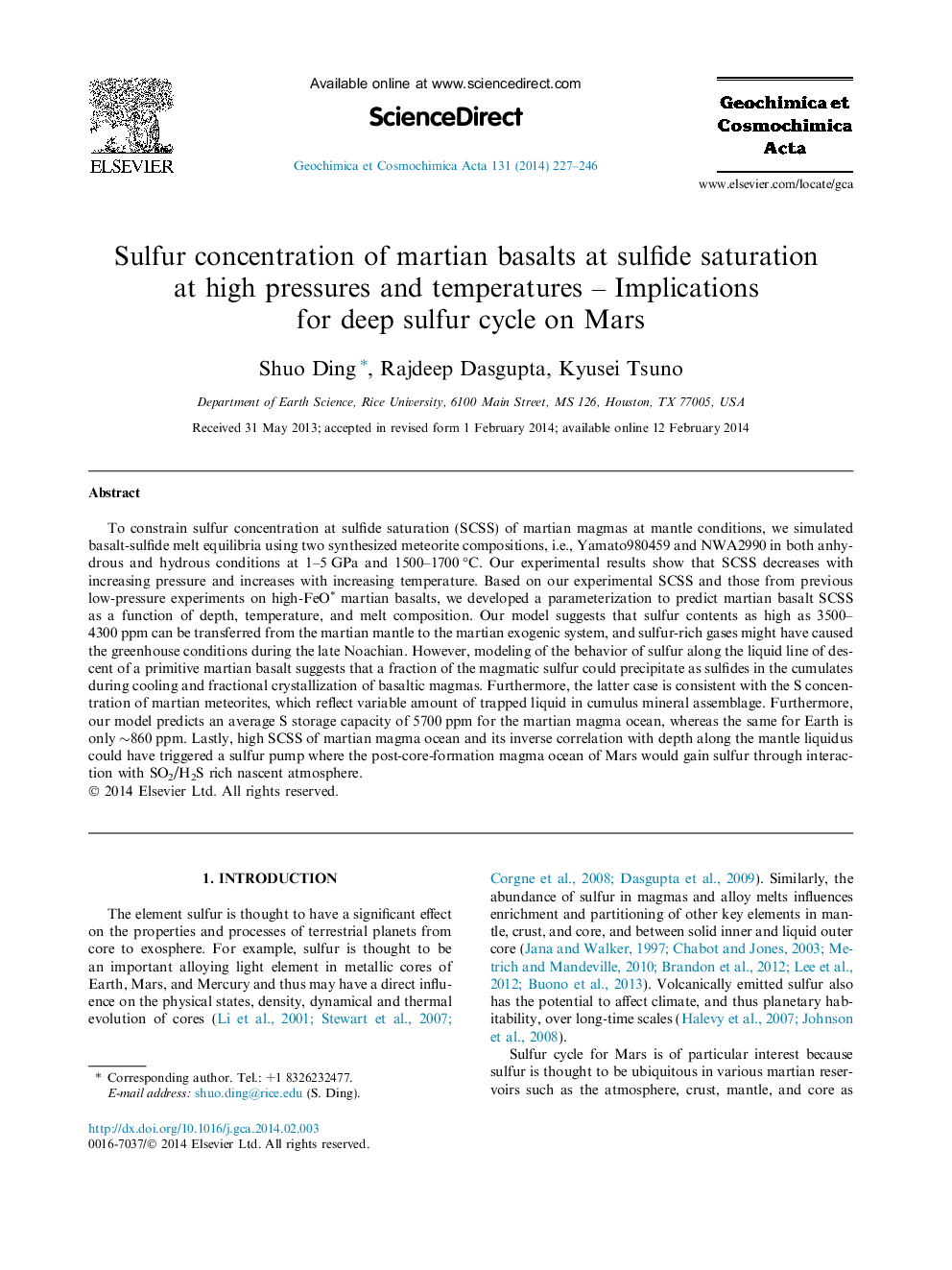| کد مقاله | کد نشریه | سال انتشار | مقاله انگلیسی | نسخه تمام متن |
|---|---|---|---|---|
| 6438636 | 1638026 | 2014 | 20 صفحه PDF | دانلود رایگان |
عنوان انگلیسی مقاله ISI
Sulfur concentration of martian basalts at sulfide saturation at high pressures and temperatures - Implications for deep sulfur cycle on Mars
ترجمه فارسی عنوان
غلظت گوگرد بازالت مارتین در اشباع سولفید با فشار و دمای بالا - پیامدهای چرخه عمیق گوگرد در مریخ
دانلود مقاله + سفارش ترجمه
دانلود مقاله ISI انگلیسی
رایگان برای ایرانیان
موضوعات مرتبط
مهندسی و علوم پایه
علوم زمین و سیارات
ژئوشیمی و پترولوژی
چکیده انگلیسی
To constrain sulfur concentration at sulfide saturation (SCSS) of martian magmas at mantle conditions, we simulated basalt-sulfide melt equilibria using two synthesized meteorite compositions, i.e., Yamato980459 and NWA2990 in both anhydrous and hydrous conditions at 1-5 GPa and 1500-1700 °C. Our experimental results show that SCSS decreases with increasing pressure and increases with increasing temperature. Based on our experimental SCSS and those from previous low-pressure experiments on high-FeOâ martian basalts, we developed a parameterization to predict martian basalt SCSS as a function of depth, temperature, and melt composition. Our model suggests that sulfur contents as high as 3500-4300 ppm can be transferred from the martian mantle to the martian exogenic system, and sulfur-rich gases might have caused the greenhouse conditions during the late Noachian. However, modeling of the behavior of sulfur along the liquid line of descent of a primitive martian basalt suggests that a fraction of the magmatic sulfur could precipitate as sulfides in the cumulates during cooling and fractional crystallization of basaltic magmas. Furthermore, the latter case is consistent with the S concentration of martian meteorites, which reflect variable amount of trapped liquid in cumulus mineral assemblage. Furthermore, our model predicts an average S storage capacity of 5700 ppm for the martian magma ocean, whereas the same for Earth is only â¼860 ppm. Lastly, high SCSS of martian magma ocean and its inverse correlation with depth along the mantle liquidus could have triggered a sulfur pump where the post-core-formation magma ocean of Mars would gain sulfur through interaction with SO2/H2S rich nascent atmosphere.
ناشر
Database: Elsevier - ScienceDirect (ساینس دایرکت)
Journal: Geochimica et Cosmochimica Acta - Volume 131, 15 April 2014, Pages 227-246
Journal: Geochimica et Cosmochimica Acta - Volume 131, 15 April 2014, Pages 227-246
نویسندگان
Shuo Ding, Rajdeep Dasgupta, Kyusei Tsuno,
